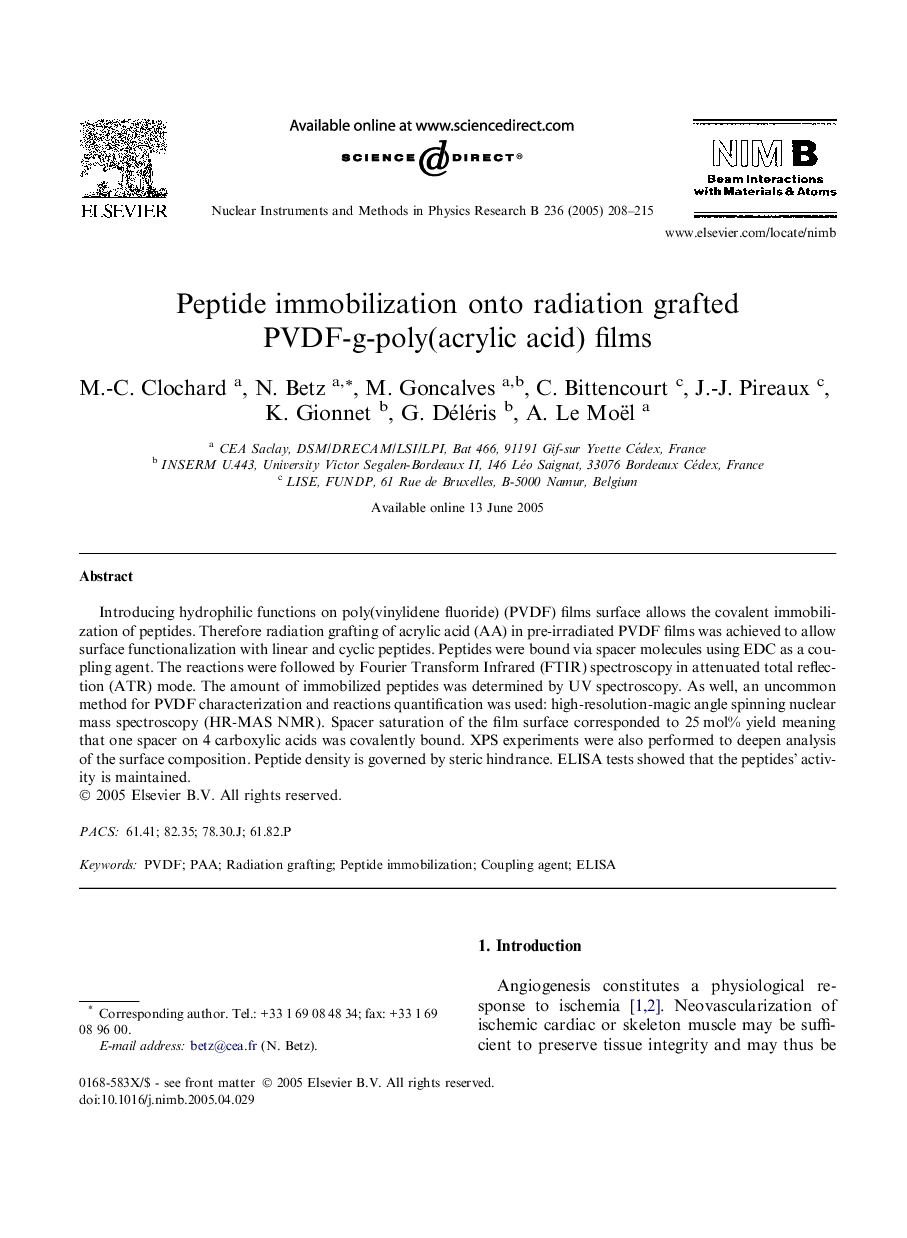| Article ID | Journal | Published Year | Pages | File Type |
|---|---|---|---|---|
| 9817833 | Nuclear Instruments and Methods in Physics Research Section B: Beam Interactions with Materials and Atoms | 2005 | 8 Pages |
Abstract
Introducing hydrophilic functions on poly(vinylidene fluoride) (PVDF) films surface allows the covalent immobilization of peptides. Therefore radiation grafting of acrylic acid (AA) in pre-irradiated PVDF films was achieved to allow surface functionalization with linear and cyclic peptides. Peptides were bound via spacer molecules using EDC as a coupling agent. The reactions were followed by Fourier Transform Infrared (FTIR) spectroscopy in attenuated total reflection (ATR) mode. The amount of immobilized peptides was determined by UV spectroscopy. As well, an uncommon method for PVDF characterization and reactions quantification was used: high-resolution-magic angle spinning nuclear mass spectroscopy (HR-MAS NMR). Spacer saturation of the film surface corresponded to 25Â mol% yield meaning that one spacer on 4 carboxylic acids was covalently bound. XPS experiments were also performed to deepen analysis of the surface composition. Peptide density is governed by steric hindrance. ELISA tests showed that the peptides' activity is maintained.
Related Topics
Physical Sciences and Engineering
Materials Science
Surfaces, Coatings and Films
Authors
M.-C. Clochard, N. Betz, M. Goncalves, C. Bittencourt, J.-J. Pireaux, K. Gionnet, G. Déléris, A. Le Moël,
